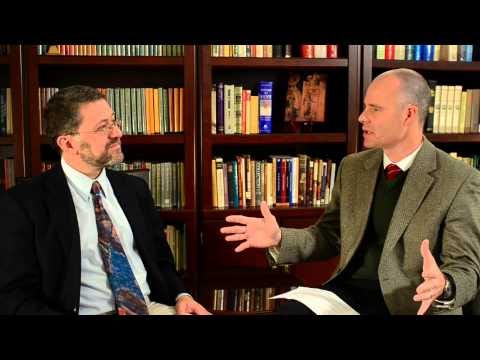Today is the Feast of Saint, and one of the Fathers of the Church, Ambrose of Milan, who was consecrated as a Bishop on this day in 374 AD. He is also credited with composing hymns that form the basis of much of our liturgical music today. He composed the repertory Ambrosian chant, also known as the Antiphonal Chant and the hymn "Te Deum", which is believed to have been written when he baptised Saint Augustine of Hippo.
If you want to delve deeper into the life and thought of this incredible Saint, this is excellent from the Saint Paul Center called "St Ambrose: A Giant of the Faith"
I was fascinated to learn that Saint Augustine of Hippo's conversion resulted from watching Ambrose reading silently as he was so absorbed in the text: apparently the normal custom was to read out loud!
Ambrose, born around 340, was a highly educated man who sought to harmonise Greek and Roman intellectual culture with the Catholic faith. Trained in literature, law, and rhetoric, he eventually became the governor of Liguria and Emilia, with headquarters at Milan. He manifested his intellectual gifts in defense of Christian doctrine, even before his baptism.
While Ambrose was serving as governor, a bishop named Auxentius was leading the Diocese. Although he was an excellent public speaker with a forceful personality, Auxentius also followed the heresy of Arius, which denied the divinity of Christ. Although the Council of Nicaea had reasserted the traditional teaching on Jesus' deity, many educated members of the Church, including, at one time, a majority of the world's bishops, looked to Arianism as a more sophisticated and cosmopolitan version of Christianity. Bishop Auxentius became notorious for forcing clergy throughout the region to accept Arian creeds.
At the time of Auxentius' death, Ambrose had not yet even been baptised, but his deep understanding and love of the traditional Faith were already clear to the faithful of Milan. They considered him the most logical choice to succeed Auxentius, even though he was still just a catechumen.
With the help of Emperor Valentinan II, who ruled the Western Roman Empire at the time, a mob of Milanese Catholics virtually forced Ambrose to become their bishop against his own will. Eight days after his baptism, Ambrose received episcopal consecration on 7 December, 374. The date would eventually become his liturgical feast.
Bishop Ambrose did not disappoint those who had clamoured for his appointment and consecration. He began his ministry by giving everything he owned to the poor and to the Church. He looked to the writings of Greek theologians like Saint Basil for help in explaining the Church's traditional teachings to the people during times of doctrinal confusion. Like the fathers of the Eastern Church, Ambrose drew from the intellectual reserves of pre-Christian philosophy and literature to make the Faith more comprehensible to his hearers. This harmony of faith, with other sources of knowledge, served to attract, among others, the young professor Aurelius Augustinus, a man Ambrose taught and baptised, whom history knows as Saint Augustine of Hippo.
Ambrose himself lived simply, wrote prolifically, and celebrated Mass each day. He found time to counsel an amazing range of public officials, pagan inquirers, confused Catholics and penitent sinners. His popularity, in fact, served to keep at bay those who would have preferred to force him from the diocese, including the Western Empress Justina and a group of her advisers, who sought to rid the West of adherence to the Nicene Creed, pushing instead for strict Arianism. Ambrose heroically refused her attempts to impose heretical bishops in Italy, along with her efforts to seize churches in the name of Arianism.
Ambrose also displayed remarkable courage when he publicly denied communion to the Emperor Theodosius, who had ordered the massacre of 7,000 citizens in Thessalonica leading to his excommunication by Ambrose. The chastened emperor took Ambrose's rebuke to heart, publicly repenting of the massacre and doing penance for the murders. “Nor was there afterwards a day on which he did not grieve for his mistake,” Ambrose himself noted when he spoke at the emperor's funeral. The rebuke spurred a profound change in Emperor Theodosius. He reconciled himself with the Church and the bishop, who attended to the emperor on his deathbed.
Saint Ambrose died in 397. His 23 years of diligent service had turned a deeply troubled diocese into an exemplary outpost for the Faith. His writings remained an important point of reference for the Church, well into the medieval era and beyond. He has been named one of the “holy fathers” of the Church, whose teaching all bishops should “in every way follow", along with Augustine, Jerome and Gregory the Great. His extensive writings include treatises on ethics, the priesthood, sacraments, the role of Mary and the liturgy. A late student to Scripture, Ambrose used his background in Greek philosophy to share the lessons of the Old Testament through the lens of its heroes.
The Basilica of St. Ambrose in Milan was begun by Bishop Ambrose himself around 385 and consecrated in 386. The church was built on a grand scale over an existing cemetery, next to the martyrium of St. Victor. Two local martyrs provided the necessary relics for the altar, and Ambrose was buried next to them after his death on 4 April, 397. He is on display within a glass coffin in the crypt, accompanied by St. Gervasius and Protasius. His skeleton is glazed with a protective coating and dressed in full bishop's finery, complete with white mitre and slippers.
Definitely a giant of a Saint!



